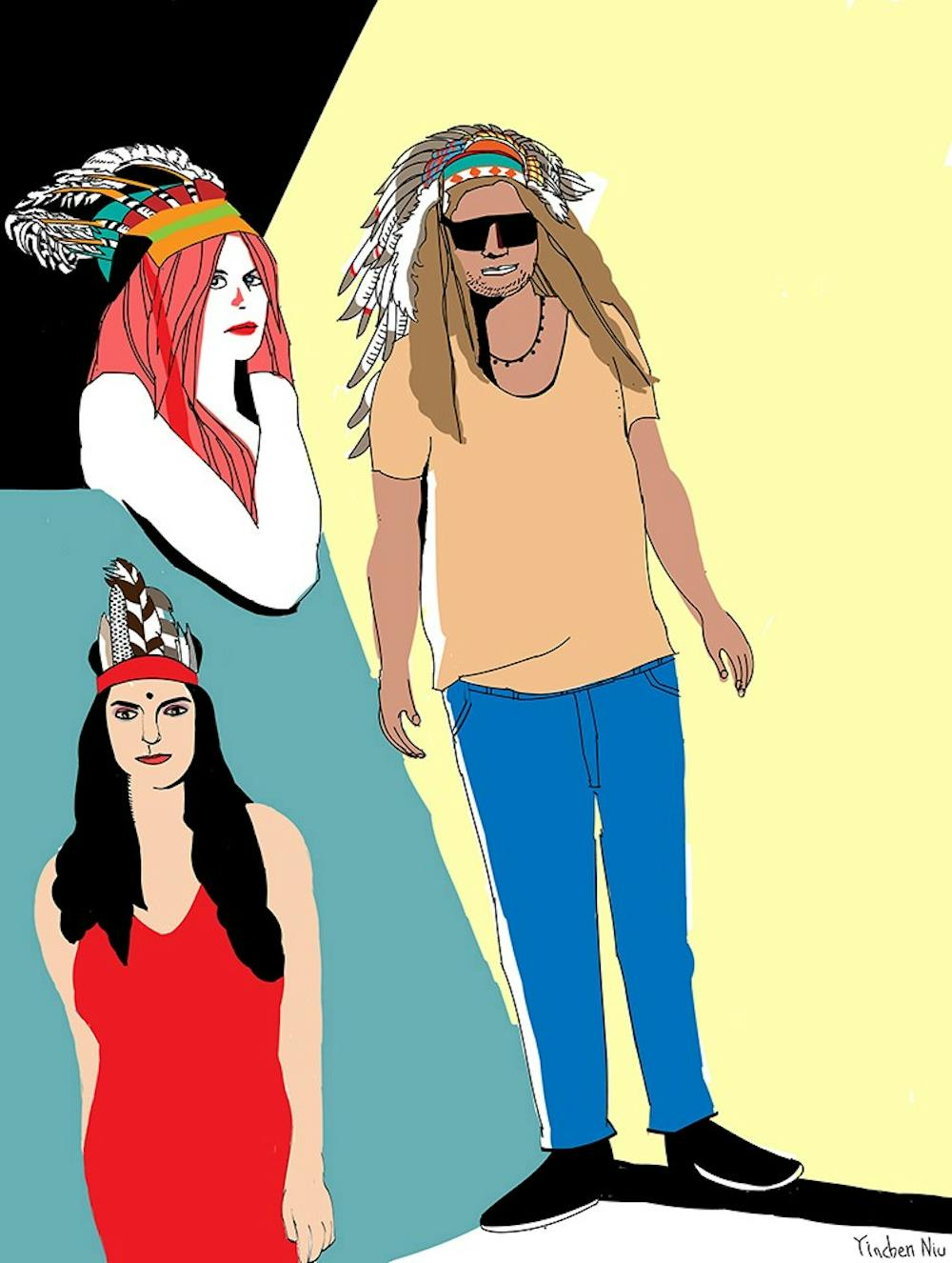We know you still love Iggy Azalea’s “Fancy,” even though the summer is over and you ought to move on. And we know you secretly tried to twerk like Miley when her album dropped last year.
But let’s be straight. Iggy’s flow takes cues from African-American style hip-hop, but she’s a very tall, very white Australian. And Miley’s twerk was seen as a bizarre new trend, even though black women had been practicing the dance in hip-hop culture for years.
This phenomenon—cultural appropriation—has been going on for decades. But there’s a lot to it.
What is cultural appropriation and why are you telling me about it?
Cultural appropriation, as defined by Professor Susan Scafidi of Fordham University, is “the theft or borrowing of intellectual property, traditional knowledge, cultural expression, and artifacts from someone else’s culture without permission.” This definition is the preferred definition by Julian Glover, a graduate student in public affairs at IU and a long-time activist and researcher in the progressive movement.
“Many times, people will do this to make a profit,” says Julian. “Or to seem more edgy or cool.”
Music has been appropriating sounds since before the Jazz Age. Hip-hop’s been the more recent face of this trend. Another highly relevant example: the wearing of Native American headdresses at music festivals and parties. Such a symbol is like wearing a purple heart—a symbol of high honor and distinction that must be earned—for no reason but to look cool, Julian says. Not cool at all.
You’ll also be able to see examples of this all October long. Costumes that depict other cultures are popular this time of year, and we’re sure you’ve seen stuff like this at parties.
Oh. Is it really that bad?
Some argue that this imitation is the natural way of things. New Wave music from the 1980s evolved out of black disco culture, but they often paid homage to their roots, making it more acceptable, says Eric Love, director of the Office of Diversity Education at IU. This imitation can even be a form of flattery. But it can easily cross a line into inappropriate, he adds.
Some arguments note that this theory of imitation ignores how dominant cultures can take aspects of other cultures and make money off it in a way the originators couldn’t. The nuance of said form of expression often gets lost in translation. Hip-hop and jazz music both began as counter-culture musical movements before they were appropriated by white artists and transformed into the various forms we see today.
There’s really not enough room in this column to address every shade of gray in this argument. People of all races like jazz. People of all races like hip-hop. Is that so bad?
“When you borrow and are still racist or sexist, that’s bad,” adds Love.
Wait. I’m not a racist! I’m not oppressing people! Are you sure you aren’t overreacting?
A white person who listens to jazz or hip-hop, for example, isn’t a racist, okay? But a lot of people think race is no longer an issue, and that simply isn’t true, says Julian.
“It doesn’t affect us directly, maybe, but it affects us every single day,” he adds. And that includes these issues of cultural expression.
I don’t think anyone is mad that people enjoy these artists or their music genres. It’s important to recognize the issues at hand, though, and, on top of that, to generally recognize your privilege in your own life (and privilege is a topic for a whole ‘nother column, trust us on that).
Okay. As long as you aren’t calling me a racist. How can I appropriately not appropriate?
Oh, you’re cute.
Unfortunately, it’s not a super easy fix. A lot of times, it’s easier to twerk and say you are “standing in solidarity” with people of color than actually engage, but that’s not really saying anything, says Julian.
So what can you do? Go to events where you are the minority. Get invited to participate. Learn to see cultures in ways beyond dance moves and pieces of clothing. At IU, you don’t have to go far to find acclaimed cultural centers.
DISCLAIMER
The writer of this piece is a white woman, and I recognize it is sort of awkward that a white person is writing a piece on cultural appropriation—that’s why I went to the experts. This column also only briefly touches on appropriation as a whole. We encourage you to do your own research and to ask questions. If you have any comments about how this piece was represented, please let us know.






